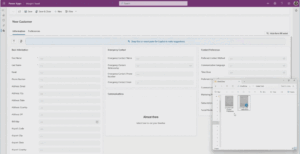Microsoft Expands Copilot for the Next Generation of AI

Microsoft’s Copilot Expansion: Shaping the Future of AI
Microsoft’s Copilot has emerged as a key player in the artificial intelligence landscape, heralding a new chapter of productivity and creativity. This innovative tool integrates seamlessly into various Microsoft applications and platforms, aiming to augment the user experience and enhance efficiency across different sectors.
What is Copilot?
Copilot is an AI-driven assistant designed to support users in tasks ranging from document creation to data analysis. By leveraging advanced machine learning algorithms, Copilot can interpret user inputs, offer suggestions, and automate mundane tasks. This technology is particularly useful in applications such as Microsoft Word, Excel, and PowerPoint, where it assists in writing, data organization, and presentations.
Key Features of Copilot
Microsoft has continuously enhanced Copilot’s features to meet the evolving needs of its users. Some of the standout functionalities include:
- Contextual Assistance: Copilot understands the context of the task at hand, providing tailored suggestions that help users save time and improve the quality of their work.
- Natural Language Processing: The tool can comprehend and respond to queries in everyday language, making it accessible for users of all technical levels.
- Integration Across Platforms: Copilot works across various Microsoft applications, allowing users to maintain productivity without switching between different software.
- Data Insights and Visualization: In Excel, Copilot can analyze data trends and create visual representations, making complex data easier to understand and share.
The Impact of AI on Productivity
With its ongoing development, Copilot aims to redefine how users interact with technology. The benefits of such AI tools include:
- Increased Efficiency: By automating repetitive tasks, users can focus more on strategic and creative aspects of their work.
- Enhanced Collaboration: Copilot facilitates better teamwork by enabling users to share insights and collaborate in real-time, regardless of their location.
- Learning and Adaptation: The tool continuously learns from user interactions, refining its suggestions and improving over time.
The Future of AI and Copilot
As AI technology rapidly advances, Microsoft plans to expand Copilot’s capabilities further. Here’s what to expect:
- Improved Learning Algorithms: Future updates will likely enhance Copilot’s ability to learn from user behavior, making recommendations even more personalized and relevant.
- Broader Applications: While currently focused on office productivity, there are plans to integrate similar AI capabilities into other sectors, such as healthcare and education.
- Greater User Control: Microsoft is investing in features that allow users to customize their interactions with Copilot, ensuring that the tool serves their unique needs.
Preparing for an AI-Driven Workspace
As organizations begin to incorporate AI tools like Copilot, it’s vital to prepare for this shift. Strategies for adaptation may include:
- Training and Support: Providing team members with resources and training on how to effectively use AI tools can maximize their benefits.
- Feedback Mechanisms: Establishing channels for users to share their experiences can guide ongoing improvements and updates to the AI.
- Embracing Change: Organizations should foster a culture that embraces technological advancements, ensuring that employees feel comfortable and supported as they transition to using AI tools.
Conclusion
In summary, Microsoft’s Copilot represents a significant evolution in workplace technology. Its ability to enhance productivity, increase collaboration, and adapt to user needs makes it a vital tool for the next generation of AI. By embracing these changes, individuals and organizations can leverage Copilot to navigate their tasks more efficiently and creatively. The future of work is undoubtedly being shaped by these intelligent assistants.




